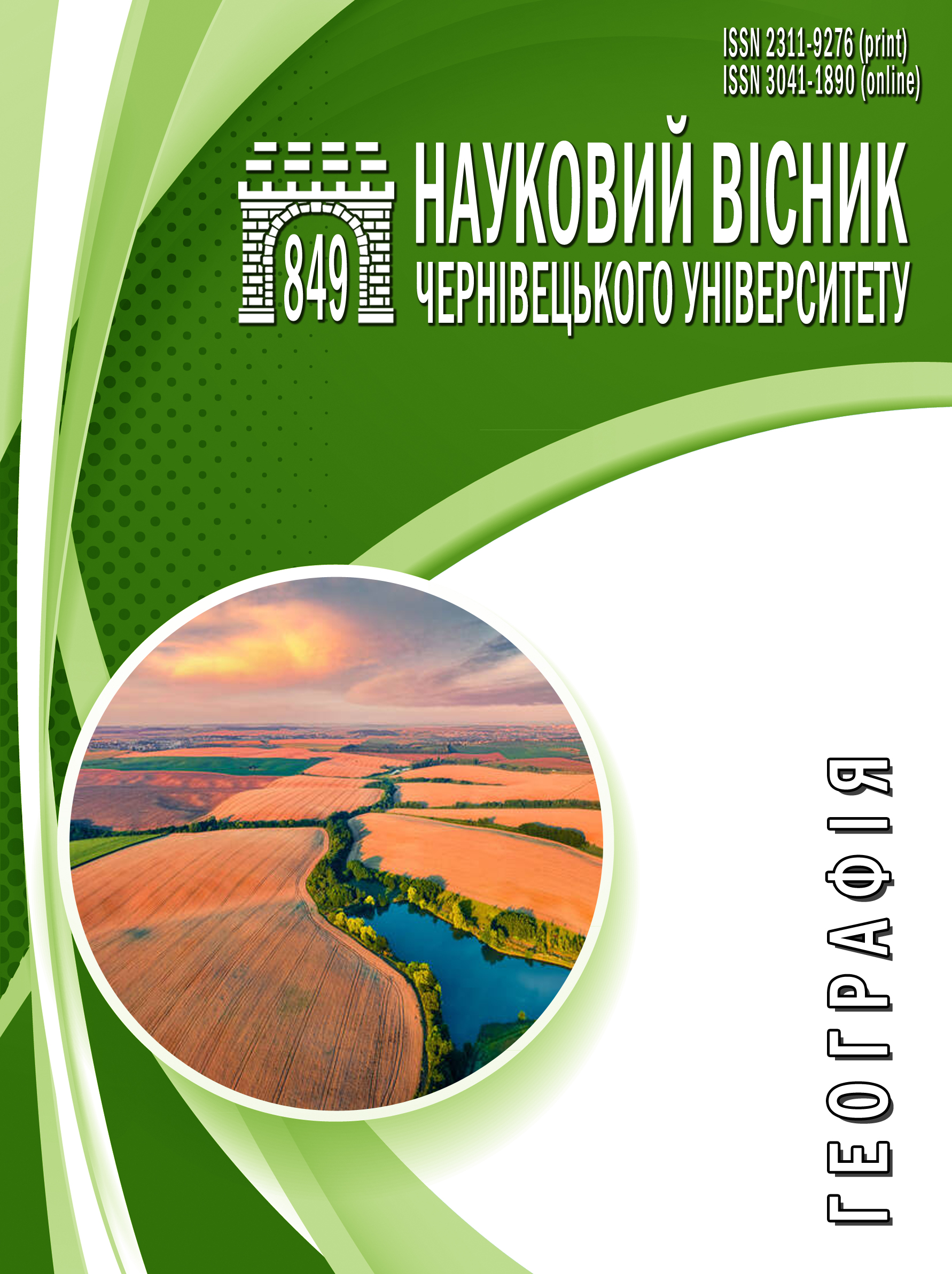Comparative analysis of methods for building the order structure of river systems on the example of the Siret River using data from remote sensing of the Earth and GIS technologies
DOI:
https://doi.org/10.31861/geo.2024.849.12-18Keywords:
GIS, stream order, Gravelius, Horton, Strahler, Shreve, satellite, Siret riverAbstract
This study investigates the hierarchical structure of river systems using the methods of Gravelius, Horton, Strahler, and Shreve, with the Siret River as a case study. Data from the ALOS-2 satellite, utilizing the PALSAR instrument at a 23.8 cm wavelength, were used for model construction through the geographic information system QGIS.
The analysis highlighted the principles of stream order system development by constructing the hierarchical structure of rivers using the methods of Gravelius, Horton, Strahler, and Shreve. Gravelius and Horton’s systems are logical and comprehensible from a topological perspective, facilitating the identification of the main river of the basin along its entire length. In contrast, Strahler and Shreve’s methods, based on graph theory, are more mathematically logical and understandable.
This study demonstrates how satellite data can be used to construct a static model of a river system, sufficient for determining its hierarchical structure. The use of satellite imagery and geographic information systems like QGIS significantly simplifies and automates the analysis process. However, the methods applied in this study are well-suited for an overview of the river system but lack precision. This is because they rely on a relief model, which does not always accurately indicate where rivers flow between slopes. Therefore, additional studies and fieldwork are necessary for precise modeling.
The study of the Siret River exemplifies the evolution of approaches to analyzing river systems and the overall advancement of geographic science. Although modern methods have reduced ambiguities and are well-adapted to automation and large data processing, there is still a need for further refinement and the integration of contemporary technologies for more accurate analysis across various geographic conditions.
References
Ющенко, Ю. С. (2017). Загальна гідрологія : підручник. Чернівці : Чернівецький національний університет. [Yushchenko, Yu. S. (2017). Zahalna hidrolohiia : pidruchnyk. Chernivtsi : Chernivetskyi natsionalnyi universytet.]
Gravelius, H. (1914) Morphometry of Drainage Bassins. Elsevier, Amsterdan.
Horton, R. E. (1945), Erosional development of streams and their drainage basins: hydro-physical approach to quantitative morphology. Geological Society of America Bulletin, 56(3), 275-370.
Shreve, R. (1966). Statistical Law of Stream Numbers, J. Geol., (74), 17-37.
Strahler, A. N. (1957), Quantitative analysis of watershed geomorphology. Transactions of the American Geophysical Union, 8(6), 913-920.
Jasiewicz, J. (2023). Open Source Geospatial Foundation documentation. Джерело
Kogut, P. (2020). Types Of Remote Sensing: Technology Changing The World. Джерело
Metz, M. (2023). Open Source Geospatial Foundation documentation. Джерело
National Academies of Sciences, Engineering, and Medicine (2015). A Strategy for Active Remote Sensing Amid Increased Demand for Radio Spectrum. Washington, DC: The National Academies Press.


